Bullet Journal Recap – An Honest Look at 2019
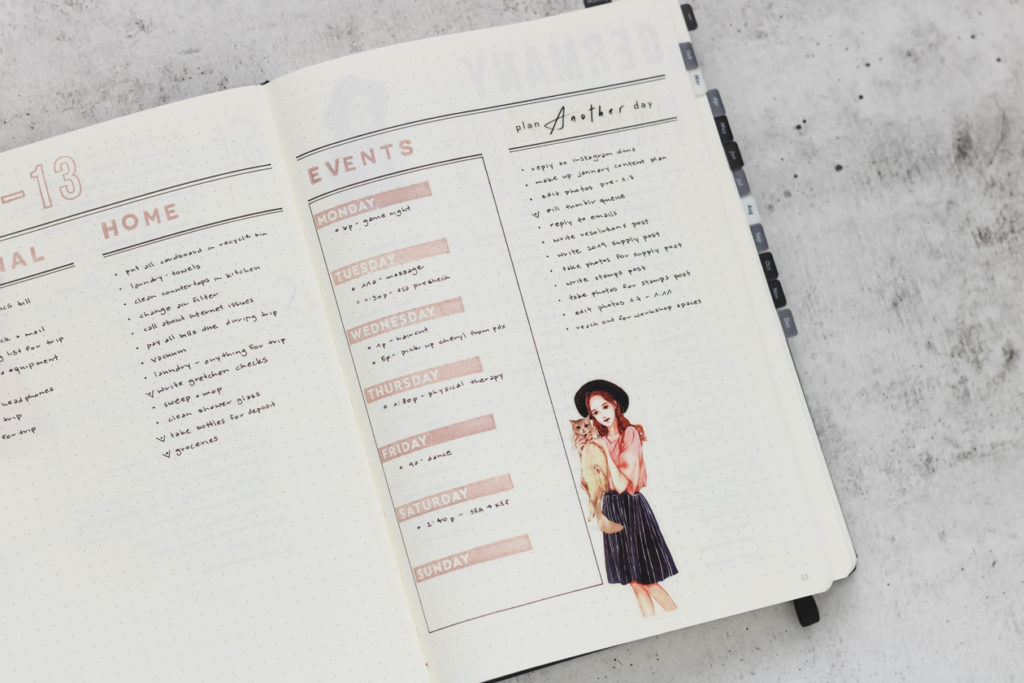
I’m going to be completely transparent as I recap my 2019 bullet journal. I say this, because 2019 was not my most productive year in terms of bullet journaling and blogging. Most of my energy went into making a new person. But even with a scaled back journal, I feel I’ve learned new things this year that I hope you’ll be able to take something away from.
In 2019, I took major breaks from my bullet journal. Pregnancy was very difficult for me. I slept through most of February and March, had to stick to a strict gestational diabetes eating routine, and dealt with some major joint pain in my third trimester. But the beauty of bullet journaling, of starting each page from scratch, is the ability to pause and restart without wasting pages. It’s the ability to customize each page to what you need at that moment. These aspects, I feel, I was really able to embrace this past year.
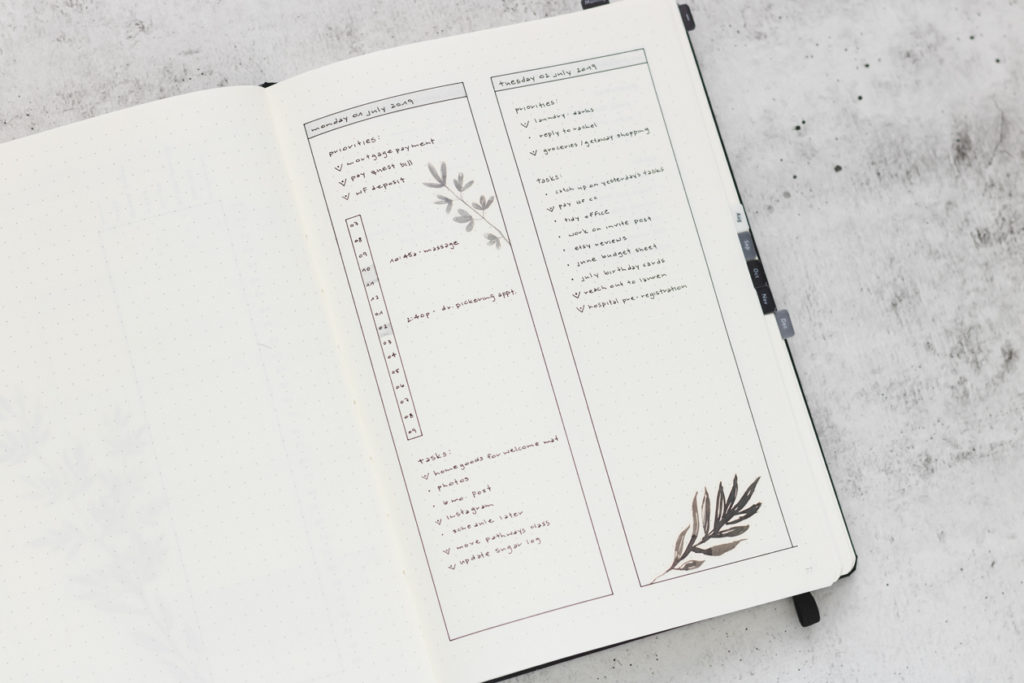
New Layouts
daily
One thing I focused on this year was optimizing bullet journal layouts to reflect my needs and the time and effort I could contribute to them. In July, I was taking things day by day, and I created a new layout that didn’t rely on consistency. Whether I was starting in the middle of the week or skipping days, this new daily layout could, in itself, be customized to fit the day I was planning for.
The spread is simple: two columns per page, one column for each day. I found several uses for this space, one day adding a timeline to keep track of appointments, another focusing on my task list instead. I used this style for a few throughout the first half of July, sometimes skipping several days between one column and the next, because I didn’t need my bullet journal those days.

weekly
By the end of October, with a newborn at home and a partner back at work, I needed to reach for my bullet journal again. There wasn’t any way my sleep-deprived, post-pregnancy brain was going to keep track of the things that needed getting done. But I needed something that was easy.
I developed a single page weekly that separates tasks from events and has space for some journaling or notes. This layout started a lot less structured. I needed to be able to keep track of tasks but I didn’t need to accomplish them on specific days. It became a condensed version of my two week spread that broke tasks apart based on categories, instead lumping them into a single group.
By November, I had a more solid structure, adding a small calendar space for date-specific items, but keeping the single bullet list for everything else. I used these layouts for all of November and it was just enough structure to keep me sane. I also made sure these layouts would allow for a little bit of embellishment. After all, I wanted to feel happy looking at my journal.
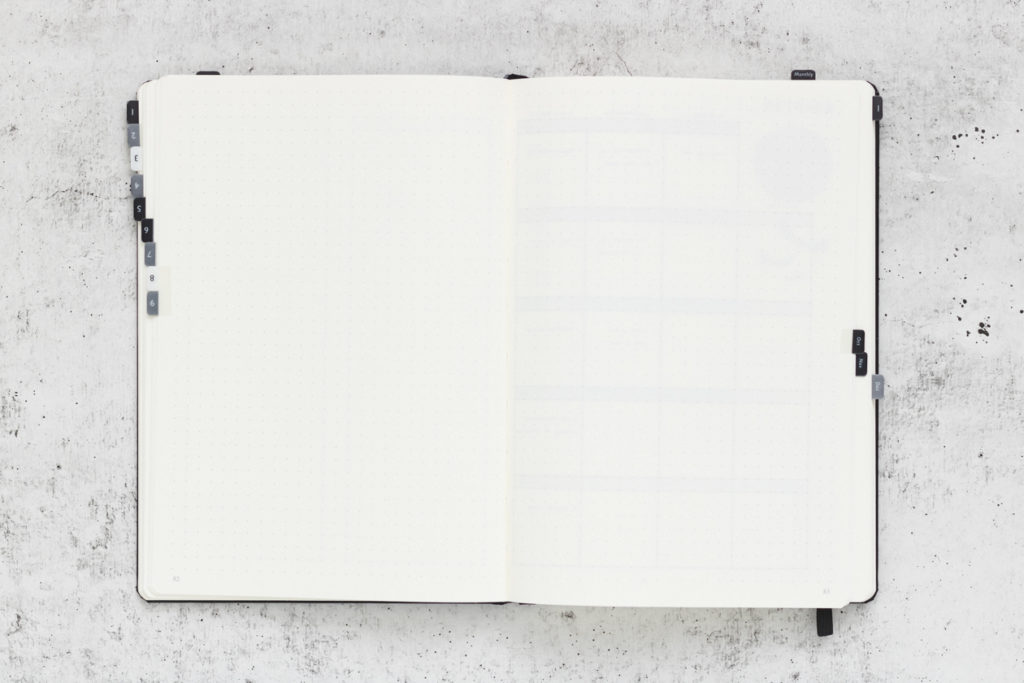
Blank Space
It wouldn’t be an honest bullet journal recap if I didn’t talk about blank space. I define blank space in three ways. First, completely blank, unused pages. Second, pages with layouts started but not completed. Third, time skips resulting in no wasted pages.
unused pages
Completely blank pages are the worst. I have a really bad habit of letting them happen in my journals. They are often there when I want to add breathing room around a spread, usually my monthly layouts. I’ll keep the page before my calendar and the page after free to prevent ghosting on my most valuable pages. They’ll also happen when I want to “save” a page for later, but I never go back to fill it in.
In 2019 I left 40 pages completely blank!
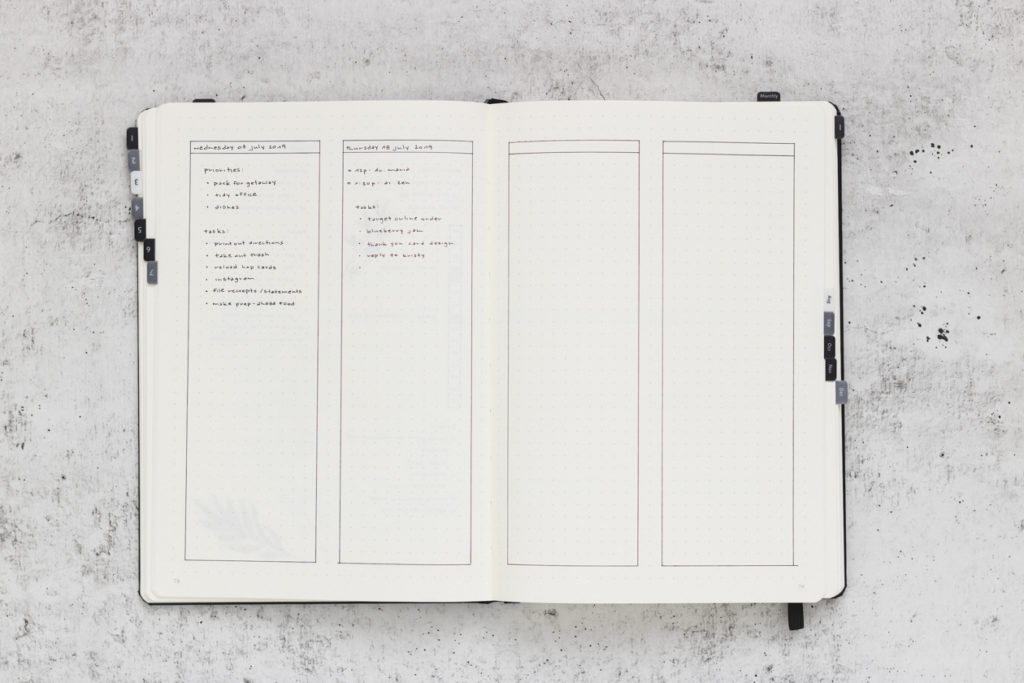
incomplete spreads
Incomplete spreads are a bummer but alright. They are a part of bullet journaling for me. I’ll start weeklies, only to have my week turn and I won’t come back to them. I’m the worst offender of not finishing monthly trackers. These parts of my bullet journal may be imperfect, but they still serve their purpose. They allow me to explore different options at different times, and let me learn what works and what doesn’t.
About ten spreads were woefully underutilized in my 2019 bullet journal. Several were set up but either never filled in or filled in with a negligible amount of information. Others weren’t completed as intended enough to be counted. Many of my weekly logs or yearly trackers weren’t filled in to Instagram worthy perfection, but they had enough function to work for me, so they didn’t fall into this category.
time jumps
Time skips are the best kind of blank space because they don’t take up any space at all. In an ideal world, every day would be recorded and every spread would be completed. The real world? Yeah, no.
In 2019 I picked up and put down my bullet journal multiple times. Between January 14th and March 22nd, I didn’t have a single daily or weekly entry. In February and December, I relied solely on my monthly layout. For the first time since starting bullet journaling in 2016, two months, August and September, weren’t even represented with a monthly.
I took big breaks. But the bullet journal system is perfect for handling those breaks. A traditional planner would have had me wasting pages and pages between July 18th and October 1st. In my bullet journal? Four blank pages.
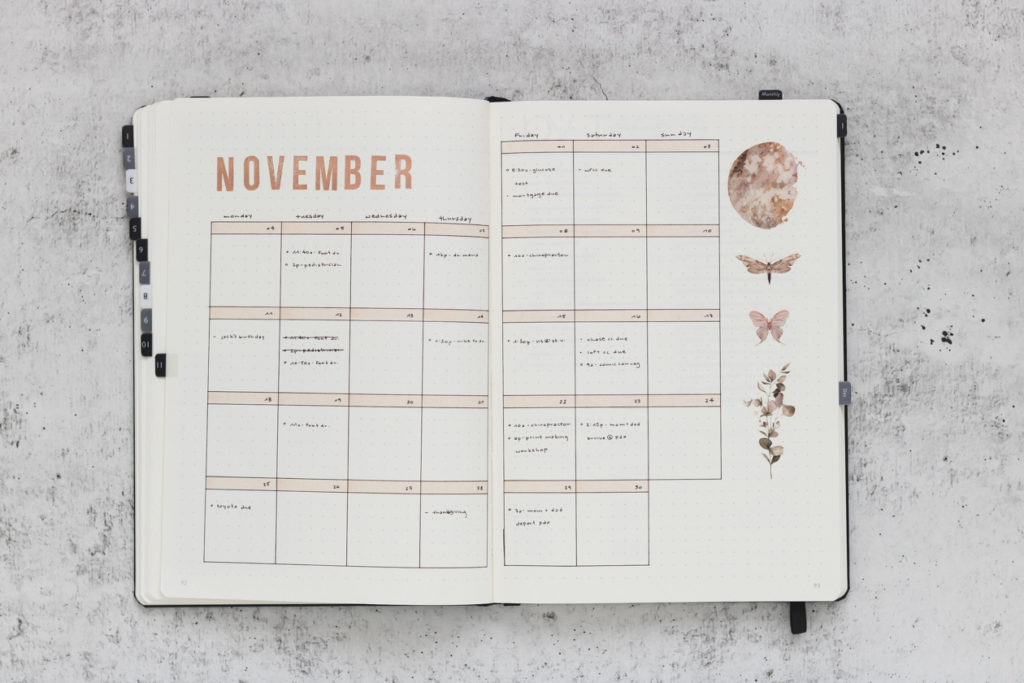
Favorite Spreads
It’s good to break down the negatives, the places for growth, in a bullet journal recap. But it’s just as important to learn from the things you like, too. I took some time to flip through every page I filled in 2019 and pick my favorite monthly, weekly, and miscellaneous spreads.
monthly
My November monthly was easily my favorite calendar layout of the year. I tried something new and it worked. The embellishments on this spread aren’t my usual style, but sing when matched with the warm stamp color and the light tan of the calendar headers.
Print-on or rub-on stickers were a new favorite for me this year. I really got to play with them for this spread, and being able to reposition the pieces until ready to commit ensured everything was in the perfect place.
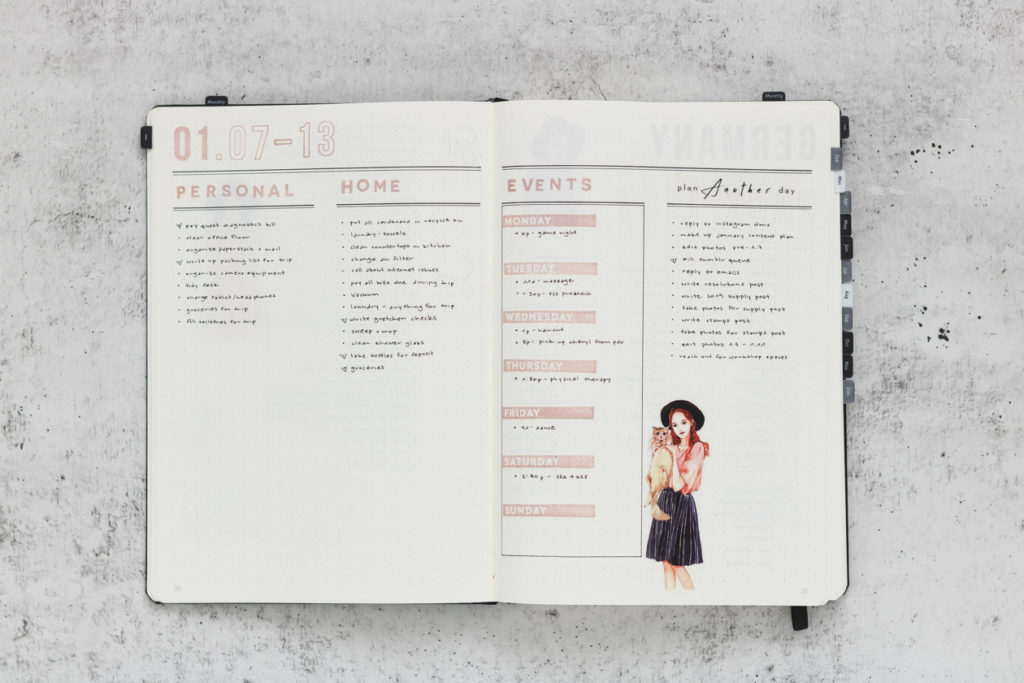
weekly
After much deliberation, the first weekly of the year was my favorite. It wasn’t that the rest never lived up to it, there were several great contenders. This spread topped the list because every piece of it was exactly how I envisioned it. The warm colors, positioning of the stamps, matching washi added to the overall impact. Functionality boosted it to first place.
I took some advice that Hannah of hannah-prints gave me during a printmaking workshop and applied it to ranking my spreads. She told me that printmakers often number their prints based on which one came closest to their original vision. This is not necessarily in line with which one is their personal favorite. Since I was struggling to decide between a couple different weeklies, I used this logic to make my final decision.
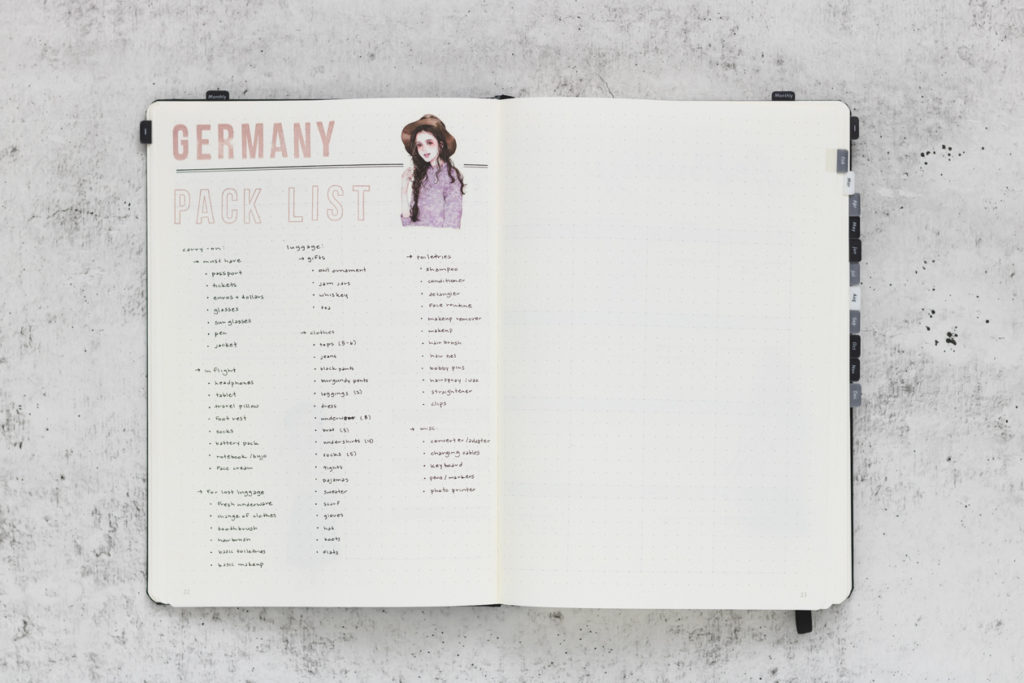
misc.
Two list pages tied for my favorite miscellaneous spread of 2019. The first is a Gifts list page that I put into the yearly tracking pages at the very front of my bullet journal. I had a baby in 2019, and that list saved my life keeping track of who sent what, and whether or not I’d sent a thank you. Pregnancy brain is real and I wouldn’t have remembered half of the list had I not had a place to put it. (This list doesn’t get a photo, because I find it too personal to share).
The second list page is my Germany packing list. I like this one because it’s pretty. Yes, it served a function. I nearly forgot two things I had written on this list, so it served its purpose beautifully. But all year I’ve been happy to flip back to it and look at it. I don’t quite know why, it’s not very involved, but hey, sometimes you like things just because.
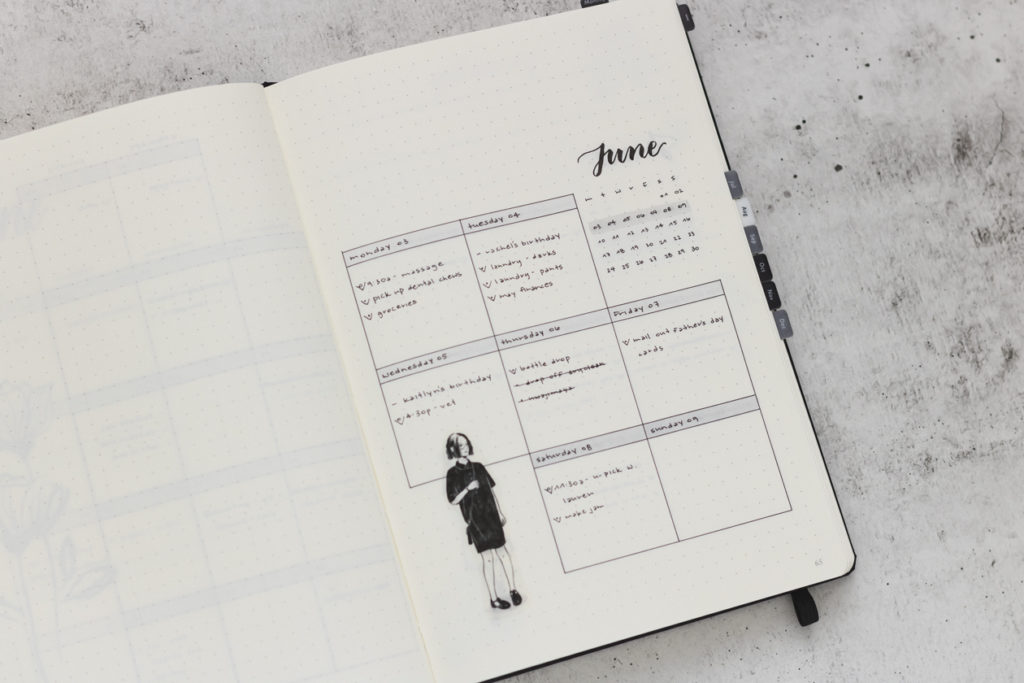
Lessons Learned
I decided to put this bullet journal recap together because I want to learn from what I did in 2019. By breaking down what worked and what didn’t, I can have greater intention in my journaling in 2020. Three areas really stood out to me: utilization, design, and functionality.
fewer empty pages
The number one lesson I took from this bullet journal recap is to waste less space in my journal. I skipped 40 pages in 2019. They were left entirely blank. For breathing room, this was occasionally fine. To go back and fill in the pages after they were no longer needed? Those pages were just wasted space. I either didn’t go back to fill them in, or, if they did get filled in didn’t provide me with any functionality. They didn’t serve a purpose.
Going into 2020, I’m going to be very mindful of the space that I leave free. Instead of leaving a blank space at the start of a new month, I plan to make a landing page. I’ll be okay if it’s simple, as long as it’s not empty.
Time jumps will also be done with intent. If I don’t have a need for a spread, I won’t add it. If a monthly is all I need, it’s all I’ll use. My bullet journal needs to work for me. It’s the whole reason I enjoy bullet journaling as a system.
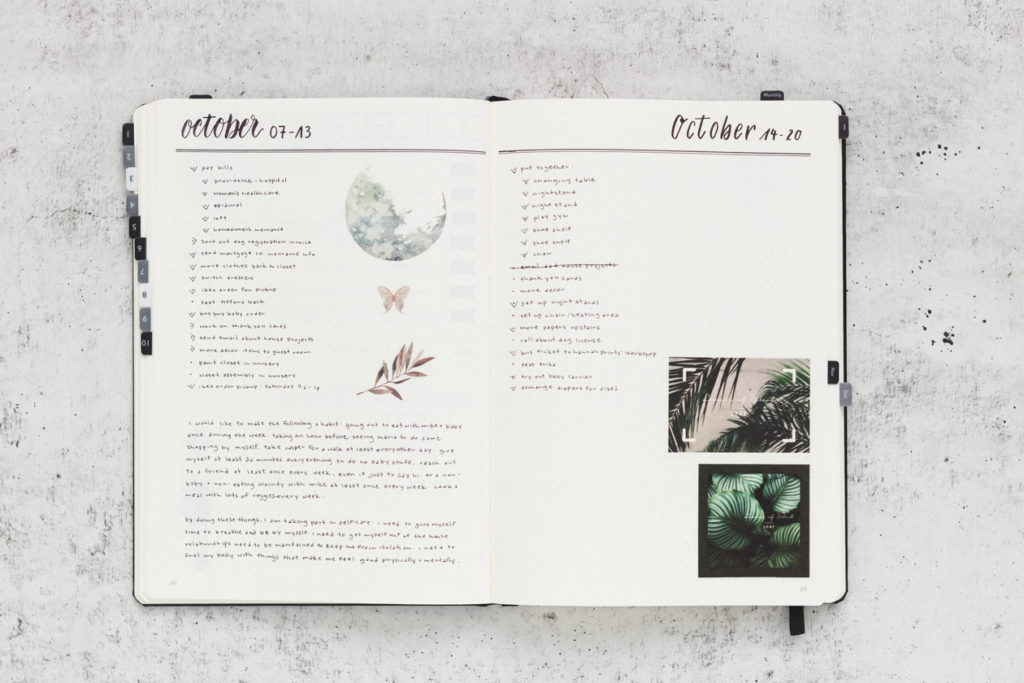
experiment with style
My second takeaway from recapping my 2019 bullet journal is that I can play with my style more. Many of my favorite spreads were with embellishments I wouldn’t naturally gravitate towards or in color schemes I’d normally not choose. The warm tones in three of my favorites are totally different than anything you’d find in my bullet journals from previous years.
Taking this into 2020, I plan to experiment with new tools and reach for new colors. I want to move away from the very gray-scale layouts of past years, and incorporate more life into them. It will be exciting to rethink how I can use embellishments in new ways, whether washi tape, stickers, or stamps.
At the same time, I plan to refine my style as well. The biggest impact came from the most minimal spreads. When trying to incorporate color or certain embellishments, my spreads sometimes feel overdone. Ideally, I’ll find a way to marry simplicity with vibrancy this year.
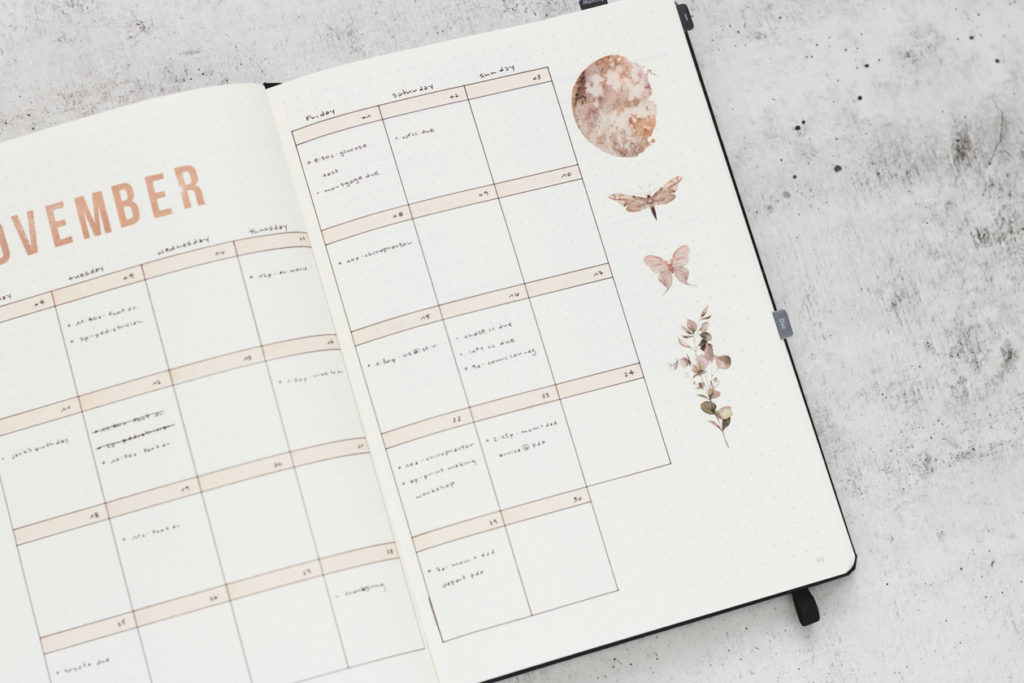
use what works
I developed some new layout options in 2019 that I foresee myself using throughout 2020 as well. But, most of the hard work was done by my tried and true layout options.
My monthly calendar has been consistent since late 2016. Needing no more than a minor tweak or two, it’s been my go-to every month because it works so well for me. I’ve often thought about switching it up, unsure if using the same layout is getting boring or redundant. But I remind myself that this journal is for me, and this layout is exactly the right fit.
The plan is to reach for the layouts and techniques that I know work. I want to put less energy into preparing my bullet journal so I get more out of it. This does not mean I’ll stifle development. Rather, I’ll focus on function to ensure I get the best use out of every page.
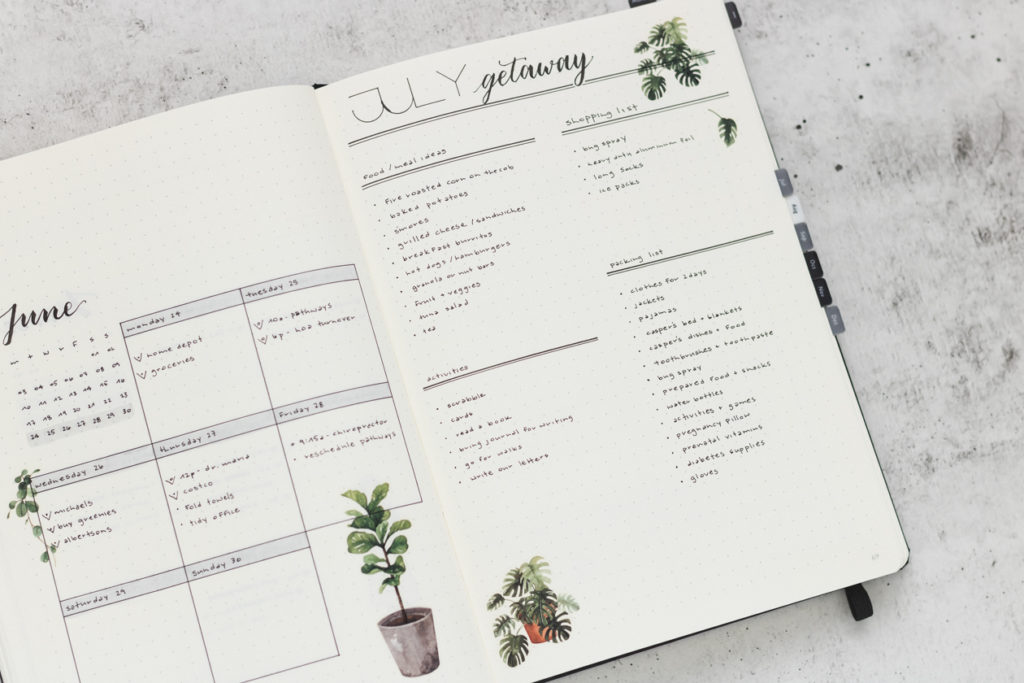
Stats + Summary
To sum up my bullet journal recap, 2019 was a slow year but my bullet journal did it’s job. It was there when I needed it, ready to be used in whatever capacity the moment required. I learned valuable lessons from both the positives and negatives of my journaling journey. 2020 will be a better year because I took the time to look back and reflect.
| total pages used | 108 |
| filled pages | 68 |
| blank pages | 40 |
| best month | November |
| most used yearly tracker | Gifts |
| favorite monthly | November |
| favorite weekly | 01.07-13 |
| favorite list | Germany Pack List |
| biggest lesson | Skip fewer pages |
Have you done a recap or look back at your bullet journal? What lessons did you learn from taking time to reflect?


One Comment